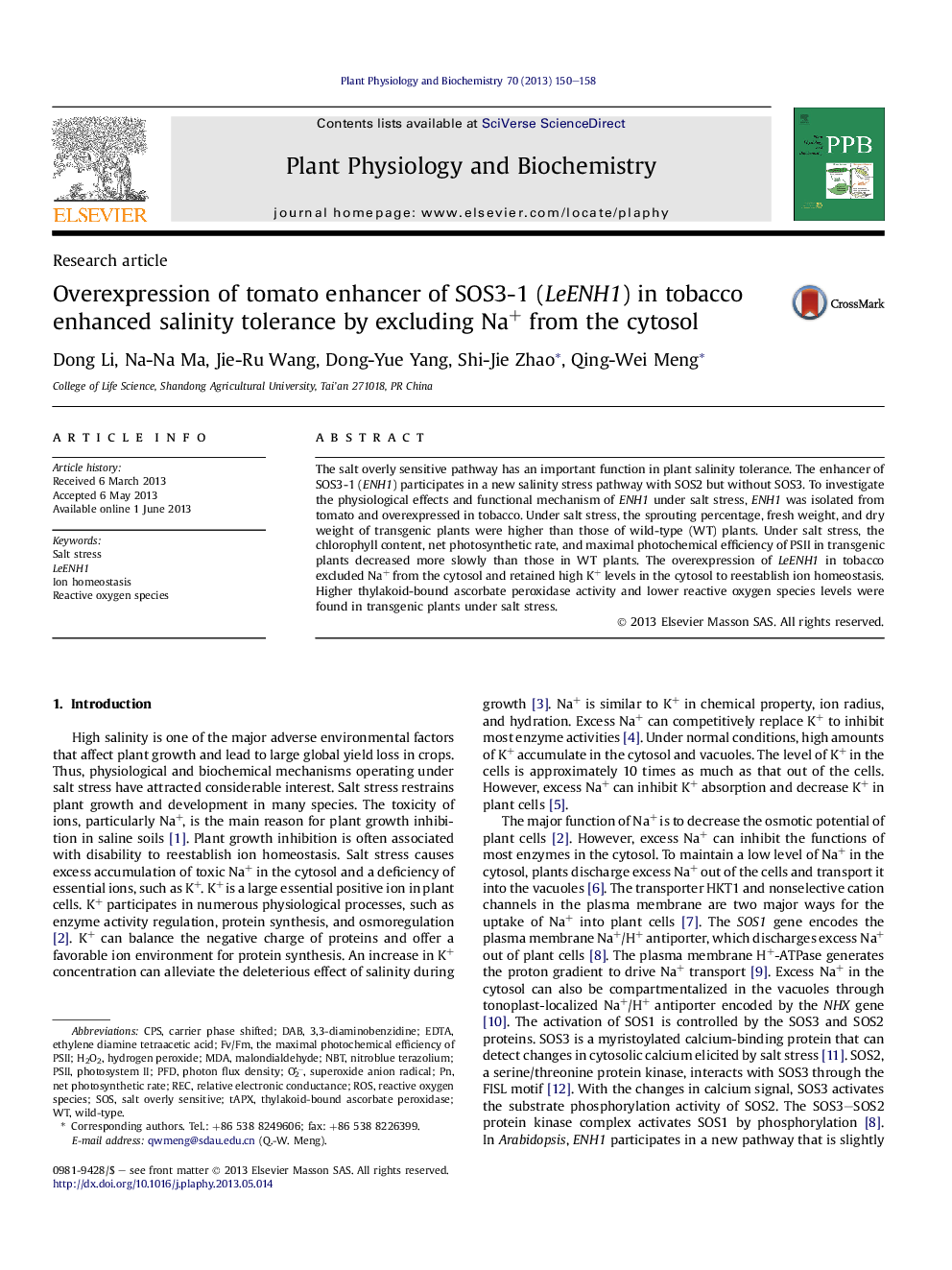| Article ID | Journal | Published Year | Pages | File Type |
|---|---|---|---|---|
| 8355532 | Plant Physiology and Biochemistry | 2013 | 9 Pages |
Abstract
The salt overly sensitive pathway has an important function in plant salinity tolerance. The enhancer of SOS3-1 (ENH1) participates in a new salinity stress pathway with SOS2 but without SOS3. To investigate the physiological effects and functional mechanism of ENH1 under salt stress, ENH1 was isolated from tomato and overexpressed in tobacco. Under salt stress, the sprouting percentage, fresh weight, and dry weight of transgenic plants were higher than those of wild-type (WT) plants. Under salt stress, the chlorophyll content, net photosynthetic rate, and maximal photochemical efficiency of PSII in transgenic plants decreased more slowly than those in WT plants. The overexpression of LeENH1 in tobacco excluded Na+ from the cytosol and retained high K+ levels in the cytosol to reestablish ion homeostasis. Higher thylakoid-bound ascorbate peroxidase activity and lower reactive oxygen species levels were found in transgenic plants under salt stress.
Keywords
rectAPXMDAthylakoid-bound ascorbate peroxidasethe maximal photochemical efficiency of PSIISOSNBTPSIIPFDDABcps3,3-diaminobenzidineFv/FmO2−ROSHydrogen peroxideEDTAethylene diamine tetraacetic acidphoton flux densitySalt stressSuperoxide anion radicalPhotosystem IImalondialdehydenet photosynthetic ratesalt overly sensitivewild-typeIon homeostasisH2O2Reactive oxygen species
Related Topics
Life Sciences
Agricultural and Biological Sciences
Plant Science
Authors
Dong Li, Na-Na Ma, Jie-Ru Wang, Dong-Yue Yang, Shi-Jie Zhao, Qing-Wei Meng,
